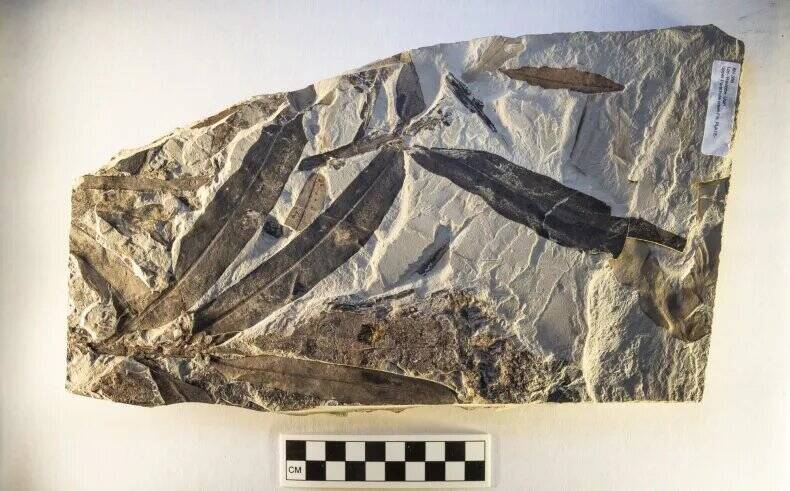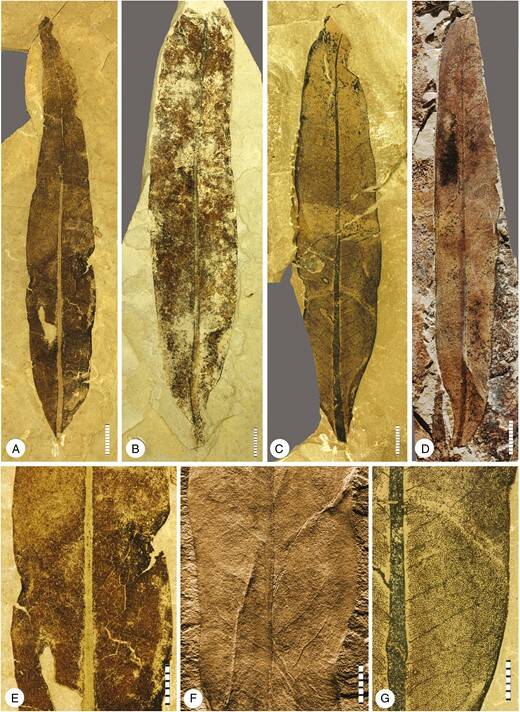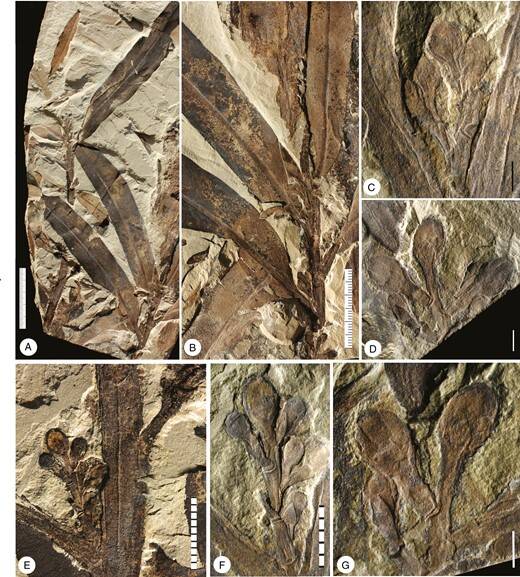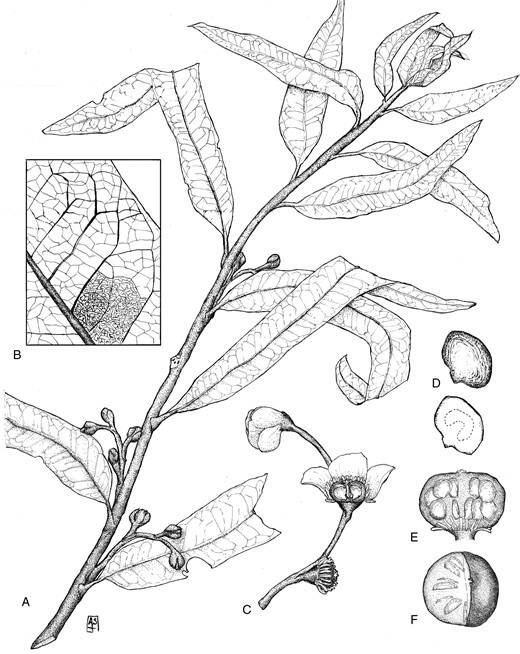Othniophyton elongatum lived 47 million years ago, but scientists can't find any modern or extinct plant families that it may have belonged to.

Jeff Gage/Florida Museum of Natural HistoryA fossil of Othniophyton elongatum, which translates to “alien plant.” The mysterious prehistoric species is not related to any known plant family in history.
Scientists have just carried out an extensive study on two mysterious plant fossils discovered in Utah – but it’s left them with more questions than answers. Only two known specimens of Othniophyton elongatum, which translates to “alien plant,” have ever been found, and this latest analysis revealed that the species wasn’t related to any known modern or extinct plant.
The study is raising questions about the way prehistoric plants are classified. Species that went extinct less than 65 million years ago are often sorted into modern families, but they may have actually belonged to families that no longer exist. Researchers say the results of this recent research illustrate the importance of not trying to “shoehorn” ancient plants into present-day categories.
Researchers Find An ‘Alien Plant’ In The Utah Desert

Manchester et al., 2024The leaves of Othniophyton elongatum, which lived 47 million years ago.
In 1969, paleontologists studying flora in the Green River Formation near the ghost town of Rainbow, Utah, discovered an unusual fossil they did not recognize. They named it Othniophyton elongatum, which means “alien plant,” and noted that it may be related to ginseng.
Fifty years later, Steven Manchester, the curator of paleobotany at the Florida Museum of Natural History, came across an unidentified fossil that was found in the same area as the alien plant while browsing the University of California, Berkeley’s botany collection.

Manchester et al., 2024The UC Berkeley fossil showcasing the twigs of Othniophyton elongatum with attached leaves and flower buds.
The unidentified fossil was much more well-preserved than the 1969 specimen, allowing Manchester and his research team to study it in detail. The team compared the features of the UC Berkeley fossil to the one discovered in Utah and determined they were from the same species. They hoped that the new O. elongatum specimen would allow them to place the “alien plant” within a known botanical family — but their analysis left them even more baffled.
The researchers could not match either fossil to any of 400 modern flowering plant families, nor did they compare to any known extinct plants.
“The distinctive combination of observed features does not coincide with any extant family… and cannot readily be placed in modern families and genera,” researchers wrote in their study, which was published in the journal Annals of Botany.
So, what was O. elongatum?
What Researchers Know About ‘Othniophyton Elongatum’

Ashley Hamersma, Manchester et al., 2024An artistic rendition of Othniophyton elongatum.
Othniophyton elongatum grew in what is now Utah more than 47 million years ago. Then, the area was home to a large lake ecosystem surrounded by active volcanoes. Researchers have found preserved fossils of fish, reptiles, birds, and plants in lake sediment and volcanic ash in the area. However, Steven Manchester, who has been studying fossils in Utah for several years, said that discovering a specimen as well-preserved as Othniophyton elongatum is exceedingly rare.
“This fossil is rare in having the twig with attached fruits and leaves. Usually those are found separately,” Manchester said in a statement from the Florida Museum of Natural History. “Usually, stamens will fall away as the fruit develops. And this thing seems unusual in that it’s retaining the stamens at the time it has mature fruits with seeds ready to disperse. We haven’t seen that in anything modern.”
Even the 1969 fossil did not contain such features, making the UC Berkeley finding all the more important to understanding this strange plant species.
The mystery of O. elongatum is also sparking debate about current classification practices. Oftentimes, researchers include plants that went extinct less than 65 million years ago in modern families based on physical similarities, but Manchester wanted to do his due diligence with this “alien” species.
“There are many things for which we have good evidence to put in a modern family or genus, but you can’t always shoehorn these things,” Manchester said.
Although the study raised additional questions about the prehistoric species, researchers are still optimistic about their results. The process of gathering other species to compare O. elongatum to revealed telling information about the evolution of prehistoric plants in general.
Julian Correa-Narvaez, the lead author of the study and a doctoral student at the University of Florida, concluded in the museum’s press release, “[This work] is important because it gives us a little bit of a clue about how these organisms were evolving and adapting in different places.”
After reading about the “alien plant” fossils found in Utah, learn how the woolly mammoth went extinct about 4,000 years ago. Then, read about de-extinction, the process of bringing extinct animals back to life.





